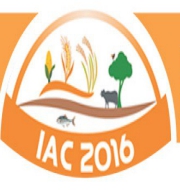Delhi Declaration on Agrobiodiversity Management adopted
The first International Agrobiodiversity Congress (IAC) held in New Delhi has adopted New Delhi Declaration on Agrobiodiversity Management.
In the declaration, 900 participants from 60 countries have urged researchers and policy-makers to strengthen and promote complementary conservation strategies to conserve and use agrobiodiversity.
Key Features of Declaration
- Agrobiodiversity Conservation: Nations must accord top priority to the agrobiodiversity conservation and their sustainable use towards achieving targets of Sustainable Development Goals (SDGs) relating to poverty alleviation, food and nutritional security, good health, gender equity and partnership.
- Traditional knowledge: Recognises importance of traditional knowledge on agrobiodiversity of farm women and men, pastoralists and other tribal and rural communities and also their role in its conservation and use for a food and climate resilient world.
- It calls upon nations to develop the necessary funding, legal and institutional mechanism to ensure and facilitate their continued active participation.
- Conservation strategies: Urge policy-makers and researchers to initiate, strengthen, and promote complementary conservation strategies to conserve and use agrobiodiversity.
- It must include wild relatives of crop to ensure a continuum between in situ, ex situ and on farm conservation strategies to combat food and nutrition insecurity as well as adverse effects of land degradation, climate change and biodiversity loss.
- Modern technologies: Researchers must employ modern technologies including, but not limited to, space, genomic, computational and nano-technologies for characterization, evaluation and trait discovery using genetic resources.
- Their aim should be to achieve equality, efficiency, economy and environmental security in agricultural production systems and landscapes.
- Global exchange: It reemphasizes the necessity of global exchange of plant, animal, aquatic microbial and insect genetic resources for food and agriculture to meet the ever-growing food and nutritional needs of each country.
- Countries need to harmonise their multiple legal systems and prioritize the improvement of their phytosanitary capacities to facilitate safe transfer of genetic resources using latest technologies and trans-boundary partnerships.
- Agrobiodiversity index: It suggests developing and implementing an agrobiodiversity index to help monitor conservation and use of agrobiodiversity.
Month: Current Affairs - November, 2016



Raghvendra Patel
November 16, 2016 at 4:37 pmThats owsome
Raghvendra Patel
November 16, 2016 at 4:37 pmThats owsome